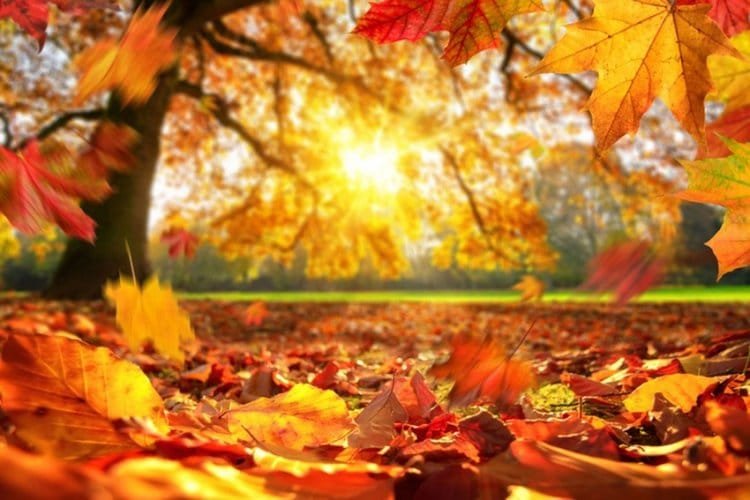Autumn colors are disappearing: Climate change is killing the magic of autumn
The bright colors of the leaves, which make autumn recognizable and give that season its charm, are increasingly disappearing. This is a consequence of climate change, experts warn.

The American Northeast is famous for its red, orange, and yellow autumn leaves, but due to climate change its variegation is disappearing, which jeopardizes the tourist attraction of 'leaf watching', which brings the region millions of dollars in revenue.
Due to climate change, it is less and less likely that we will be able to watch scenes of autumn colors in the future, Andy Finton, a forest ecologist from The Nature Conservancy in Massachusetts, told AFP.
Several sensitive factors need to overlap to give the leaves adorning New England postcards their vibrant colors and attract tourists to visit states like Vermont, Maine, and New Hampshire in October.
The right combination of summer temperature and rainfall and shorter sunny days and colder nights after summer cause the decomposition of chlorophyll in the leaves, and thus their yellow and orange pigments, carotenoids, responsible for the golden color of ash and birch trees.
But arborists are much more concerned about another, more complex chemical process by which the leaves produce sugar credited with the appearance of the red pigment anthocyanin in the leaves of the sugar maple and nisa.
Muted colors
The combination of above-average warm days, warm nights, and clouds caused by increased precipitation slows down the process of photosynthesis, which endangers the appearance of the favorite dark red shade of leaves.
The color of the leaves will become more muted, Finton said.
Traveling to places where you can observe and photograph autumn colors is called "leaf-peeping" in the local jargon.
As the leaves gradually change color throughout New England, from north to south, including Massachusetts and Connecticut all the way to New York, numerous websites tracking the phenomenon try to predict where and when the variegation of autumn leaves will peak.
But environmentalists say climate change is moving the beginning of autumn backward, making it harder to predict when the time for leaf color change will occur. And if there is a sudden wave of cold, the whole phenomenon will last shorter.
University of Richmond environmental expert Stephanie Spera is studying the impact of climate change on fall foliage in Acadia National Park in Maine.
We can notice that the change in leaf color occurs almost a full week later than it was in the 50s and now begins around the second week in October, Spera told AFP.
Barbara Brummer, a field biologist employed at The Nature Conservancy's New Jersey office, estimates that this year the change was at least two weeks late "compared to what time it usually took place 100 years ago."
Parasites and diseases
Autumn leaf tourism is big business in the northeastern United States. According to official data, the state of Vermont earns $ 300 million a year from this type of tourism.
During the fall, more than 500 people visit Polly’s Pancake Parlor restaurant in New Hampshire every day to admire the colorful scene on the White Mountains.
This restaurant has been recording the time of changing the color of the leaves for the last fifty years so that they can monitor the impact of weather conditions on the number of guests.
Autumn plays a huge role in our business, and guests always ask what is the best time to visit, owner Kathie Cote told AFP, adding that she herself is seriously concerned about climate change.
Alejandro Bertagnoli, a 31-year-old tourist from Argentina, along with his girlfriend visited Central Park in New York City in early November, where they were surprised by the fact that the leaves are still green.
The scenes are different from what we expected. But we still enjoyed it, he said.
Warmer and wetter weather also helps spread invasive pests and tree diseases, says Pete Smith, head of the Arbor Day Foundation's urban forestry program.
Nothing will disturb the colors of autumn as much as a dead tree, he said.
Good for the soul
Extreme weather conditions also have devastating effects. Heavy showers and strong winds in September, caused by Hurricane Ida, stripped branches and destroyed trees.
Environmentalists are also concerned about the phenomenon of burnt leaves that appeared this summer in the western United States as a result of the unfortunate high temperatures that burned the leaves and deprived them of pigment.
They claim that carbon emissions should be reduced and forests preserved in order to protect the leaves.
Although they are aware that leaves will not be the most important subject of discussion at COP26, healthy leaves still speak to the health of forests, and they are an indispensable part of the environment.
The sugar from the leaves supplies the branches and trunk of the trees with the energy necessary for the growth and development of the tree in the spring.
If these cycles are disrupted, there will be consequences we are probably unaware of since nature is very complex, Brummer said.
She added that autumn leaves are also good for mental health. You are glad to see the beautiful red color when you go outside.
By: Amber V.





























